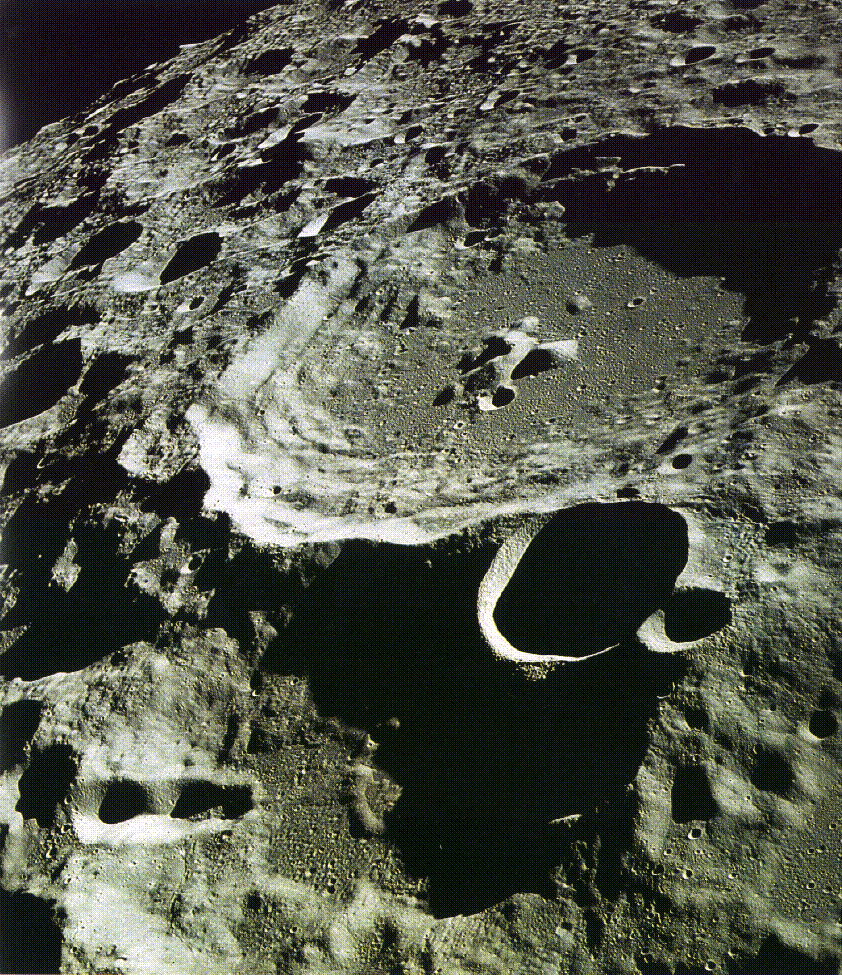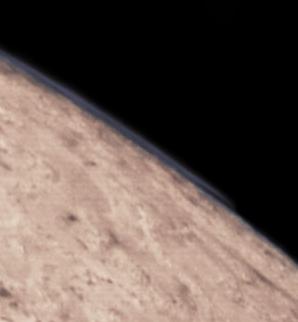Lessons Learned from Comparative Planetology
Heat energy is stored in a planetary body. Sources of heat are accretional energy, energy released by differentiation, and radioactive decay. All are proportional to the planet mass. Cooling is by thermal radiation from the surface. Planets are warmer in the interior, and cool on the outside. For cooling to occur, heat is transported to the surface from the interior.
Because the amount of energy is proportional to mass (which is proportional to volume, or radius cubed), and energy loss rate is proportional to surface area (or radius squared), larger planets stay hot longer than smaller planets.

- The Moon and Mercury, which are small, are geologically dead because their interiors have cooled. So there is no active volcanism or tectonic activity on these objects.
- Mars, the medium sized planet, is apparently geologically dead, but has had volcanic activity much more recently than the Moon.
- Venus and Earth, which are relatively large, have recent and/or ongoing geological activity.
Just by looking at a surface, you can tell if its old or young: LOTS of craters? It's old. Few craters? It's young (and has been re-surfaced by lava flows). In this photo of the moon, craters have been found inside of other craters. The largest craters appear to be the oldest, based on this overlapping. This indicates the impact objects where larger at earlier times.
 Which planets can hold an Atmosphere?
Which planets can hold an Atmosphere?
Whether or not a planet has an atmosphere depends on its gravity, the composition
of the atmosphere, and the temperature. If the atoms or molecules in a planet's
atmosphere are moving faster than the escape speed, then the planet's gravity will
not be able to hold them and they will escape. This will happen if the temperature
is too high (i.e., if the planet is too close to the sun), if the molecules are
too light (e.g., H and He molecules are very light but CO2 and NH3
molecules are quite heavy), and/or a planet has a low mass hence a low escape speed.
Massive, cold planets and moons can hold the 'best' atmosphere.
We can explain why Mercury has no atmosphere, but Titan (a Moon of Saturn), which has the same mass, does. Mercury is extremely close to the Sun. It's atmosphere got very hot and the molecules move faster than the escape speed.
In the same spirit we can also explain why the outer planets have H and He in their atmospheres and the inner planets do not (H and He atoms are the lightest of all atoms and they escape most easily). This is for two reasons: the outer planets are more massive hence their escape speed is higher and they are further away from the Sun hence the temperatures of their atmospheres are lower.